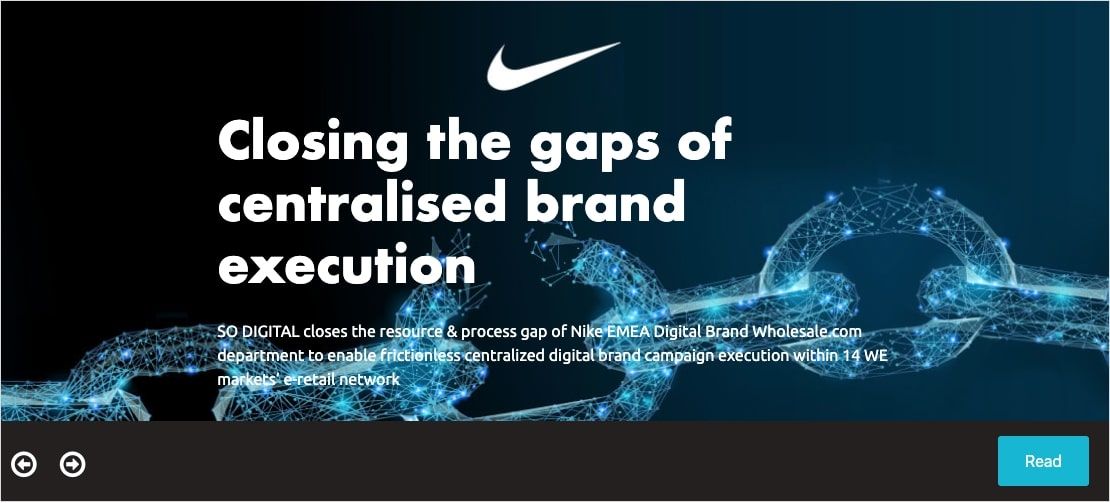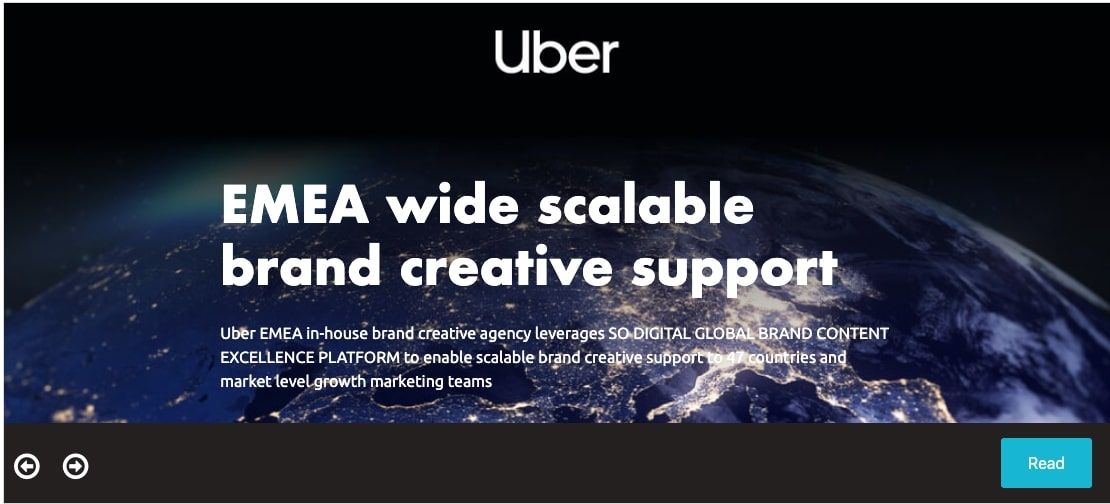We specialise in serving headquarters of global brands, helping them cut complexity costs in strategy execution across markets and fulfil their corporate role as scale economisers and advantage accelerators. Leverage our consulting expertise, technology solutions and remote talent resources to create organisational simplicity, scalability and efficiency in multi-market operations.
Transforming global brand marketing, creative and eCommerce function into a competitive advantage
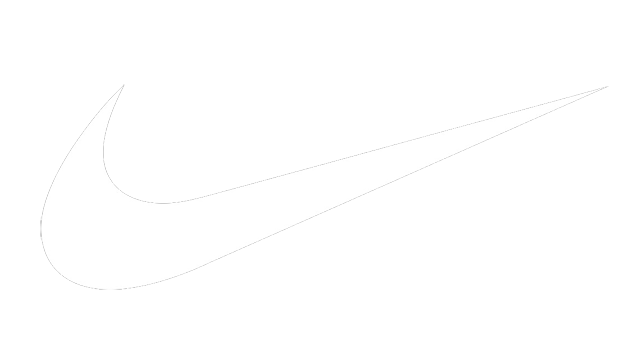 (EMEA) 14 markets
(EMEA) 14 markets
 (EMEA) 47 markets
(EMEA) 47 markets
 (EMEA) 17 markets
(EMEA) 17 markets
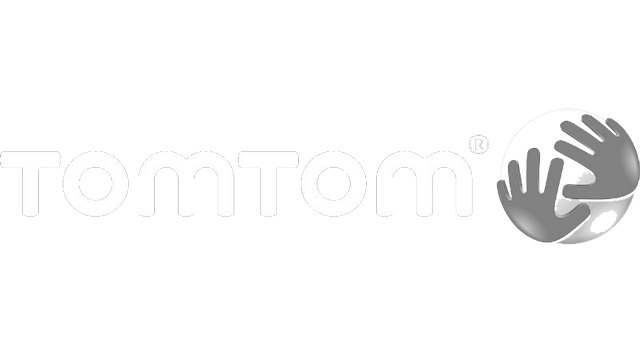 (WHQ)
(WHQ)
Why do we need so much content?
There are few organisational capabilities that have been consistently and exponentially growing in demand, like the ability to continuously create, deliver and publish content at a scale. The insatiable demand for content has been fuelled by a confluence of self-perpetuating developments in organisation's general, market and internal or company environment. Initial loop of growing content needs was generated by the rapid advancement of technology in the general company environment, triggering the change in consumer behaviour and expectations in the market environment. Consumers increasingly began searching for, conversing with and buying products and services from organisations through digital means. This, new, digitised path-to-purchase and post-purchase occurs not only across a range of multiple channels and devices, but also through an ever growing number of digital properties - all of which require to be fed with content at every stage of the digital customer journey.
Digitised path-to-purchase and post-purchase occurs not only across a range of multiple channels and devices, but also through an ever growing number of digital properties - all of which require to be fed with content at every stage of the digital customer journey.
Whereas 10 years ago a brand's digital presence consisted of a Facebook page, which drove customers to its website, now in addition to Facebook, brands have an Instagram profile, a TikTok, Snapchat profile and most likely a Linkedin page. Being present in consumers' minds means being present in their social newsfeeds. Designed for habit creation, social networks' refreshing newsfeeds and disappearing post features command, at least once, most often 2-3 times per day, posting requirement, adding an additional layer of content creation and demand dynamism.
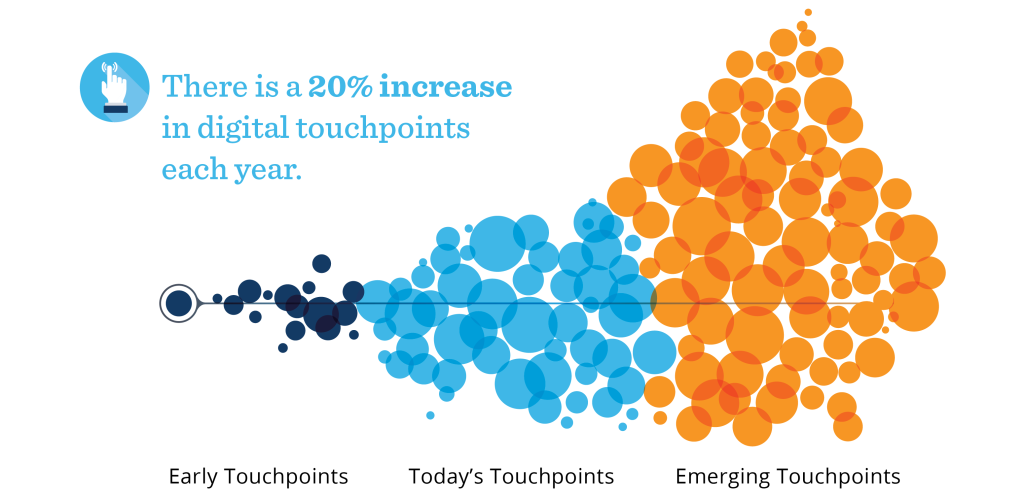
As if fragmenting marketing and 'always on' marketing environment doesn't create enough content demand, additional demand for content has actually been generated inside the company. Unlike physical, consumers' digital pathways journeying is tracked extensively, creating troves of customer data, which is fed back into powerful marketing audience segmentation engines, triggering yet additional round of content demand based on consumer specific preferences in communication and product selection.
.jpg)
Source of demand content come from both external and internal organisational environment as a consequence of technology change in general / macro environment
Worth noting is that content needs don't just come from acquisition or pre-purchase phase, but also post-purchase or after-sales phase when consumers either need support with their products or simply want to stay engaged with brands.
Meeting brand creative content demand through in-housing
In early stages of market environment digitisation, specialised marketing agencies provided services of digital media and digital creative production. However, as content demand continued to rise, that set up proved to be unsustainable both from financial and operational dimension. There was simply too much content demand within too short of timelines to be met by an external provider. First sustainable response to rising tide of content needs was met through in-housing of digital brand content creation capabilities. In 2018, 78% of the membership of the Association of National Advertisers reported having some form of an in-house agency, and that figure is expected to increase as brands navigate a post-pandemic advertising industry. Price competitiveness, closeness to the business operations and intimate brand knowledge were some of the leading reasons to in-housing creative production. According to a recent report from the World Federation of Advertisers (WFA) and The Observatory International, growth in digital opportunities has led to a rise in in-house agencies, with 74% being established in the last five years.
Growth in digital opportunities has led to a rise in in-house agencies, with 74% being established in the last five years.
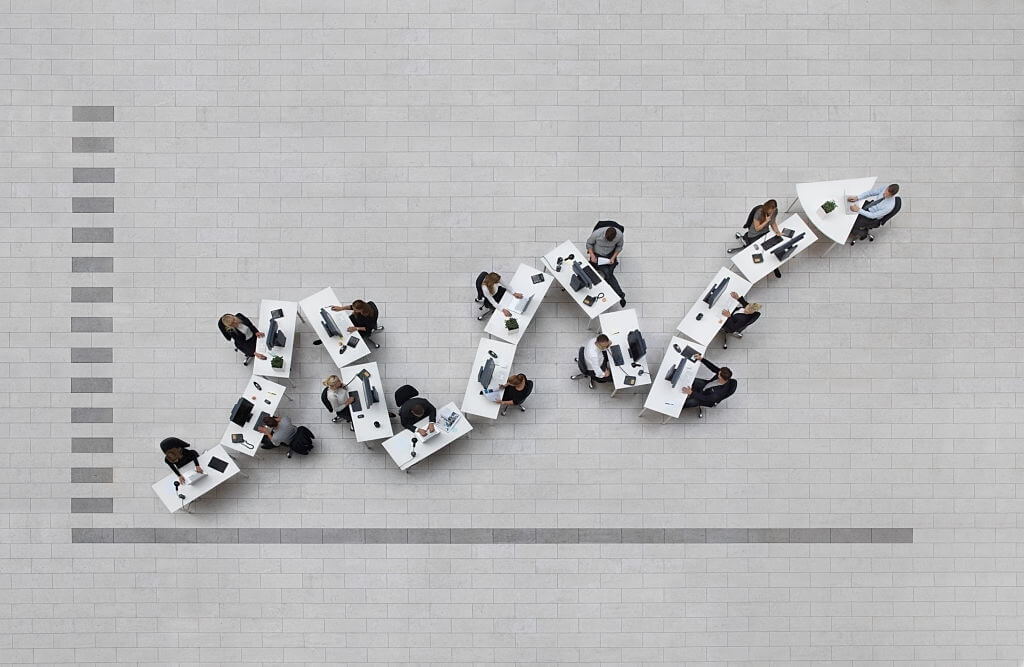
According to the report's findings, 57% of respondents currently have an in-house agency, while a further 17% are presently considering one. Industries which have significantly suffered from covid pandemic are speeding up transitions to in-housing brand creative production capabilities - especially large hotel groups. Hilton began in-housing its creative in 2019, but sped up the process in 2021. With pandemic uncertainty, Marriott and Hilton have are both looking to bolster their own internal creative agencies, hoping to make the companies—and their combined 50 brands—more nimble heading into the new year However, in-housing of brand creative is no panacea. It brings its own challenges and costs of operations, often which are disregarded when in-housing decision is being made, but surface later on. While part of the purpose of creating in-house agency is to reduce marketing budget costs, it actually will mean increase in the fixed cost base of the company.
However, in-housing of brand creative is no panacea. It brings its own challenges and costs of operations, often which are disregarded when in-housing decision is being made, but surface later on.
The often-hidden costs of in-house agencies range from recruitment costs (staff churn being 25%, meaning having to replace complete agency once every 5 years), software licences and subscriptions, real estate and utilities (office space usually in prime locations), equipment (eg. shooting cameras, computers etc.), professional development and training, holidays and sick leave, additional management cost (managerial staff to run and align new teams with existing), employee underutilisation (in case of seasonalities) and redundancy costs (in case of economic downturns and staff reduction). So, it is quite possible to build an internal production facility that is still expensive, inefficient and inflexible, not to mention less competent.
.jpg)
While the in-housing of creative production capabilities is here to stay and share of companies who create in-house creative teams will grow, the post-pandemic reality, with proliferation of remote work and additional economisation pressures, will give rise to the next generation of in-house brand creative production models. The remote (lower cost country) brand creative content factory teams & digital production hubs working as internal ecosystem partner solves both the operational shortcomings of the traditional in-house creative production model and operational pains in-house creative teams. This is especially true if it is set up and operated by an external vendor who takes on the initial risks and sunk costs of set up until remote team becomes entirely operational and ready to be integrated with the main in-house team.
The post-pandemic reality, with proliferation of remote work and additional economisation pressures, will give rise to the next generation of in-house brand creative production models.
Setting up and operating an internal remote (lower cost country) brand creative content factory & digital (post)production hub : Uncovering The Why?
2021 In-House Creative Industry Report published by Cella Consulting provides a great insight into a state of in-house creative agencies, revealing some of the challenges in-house leaders face. Building on survey of more than 400 participants the report not only directly reports on the in-house creative team leaders' challenges, but also indirectly identifies the main pillars of the solution the remote lower cost country support team model would deliver.
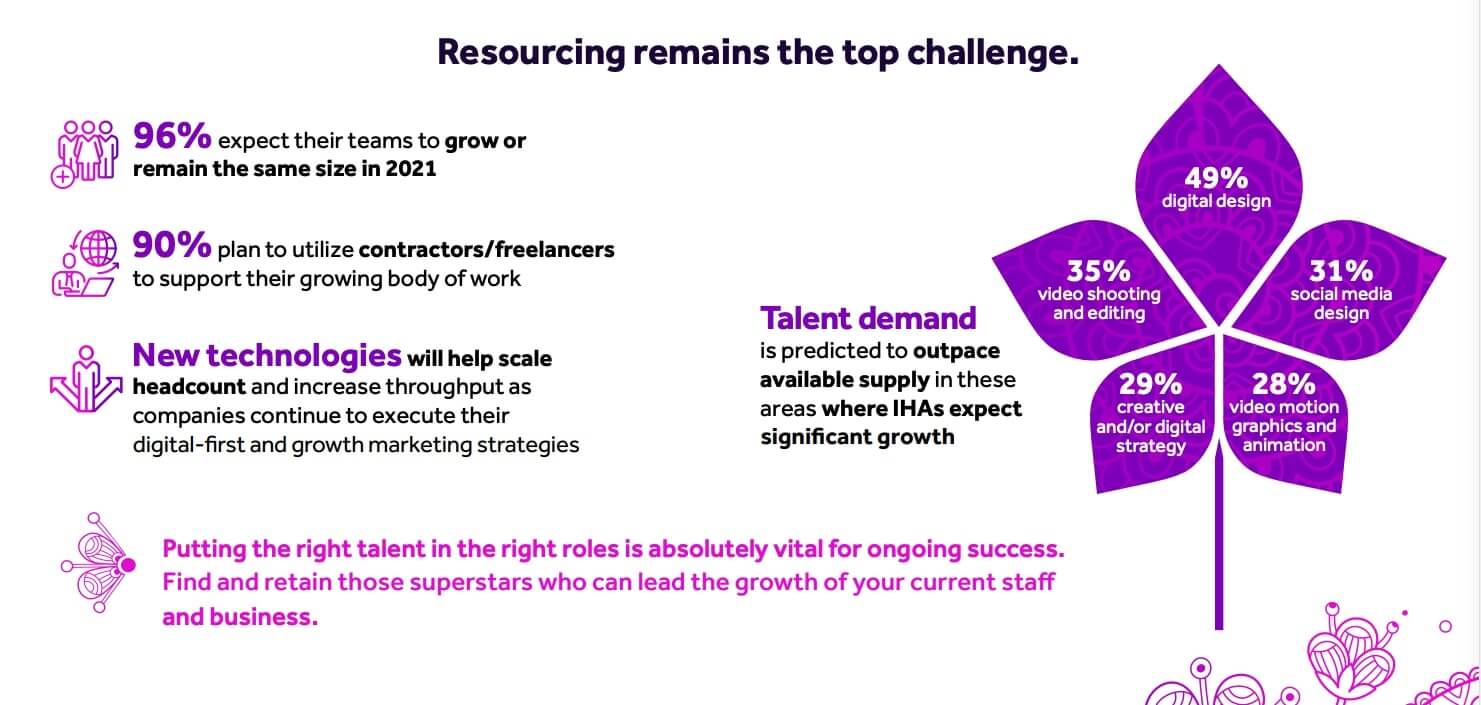
Resourcing remains the top challenge. Cella, Inc., 2021 In-House Creative Industry Report, April 2021
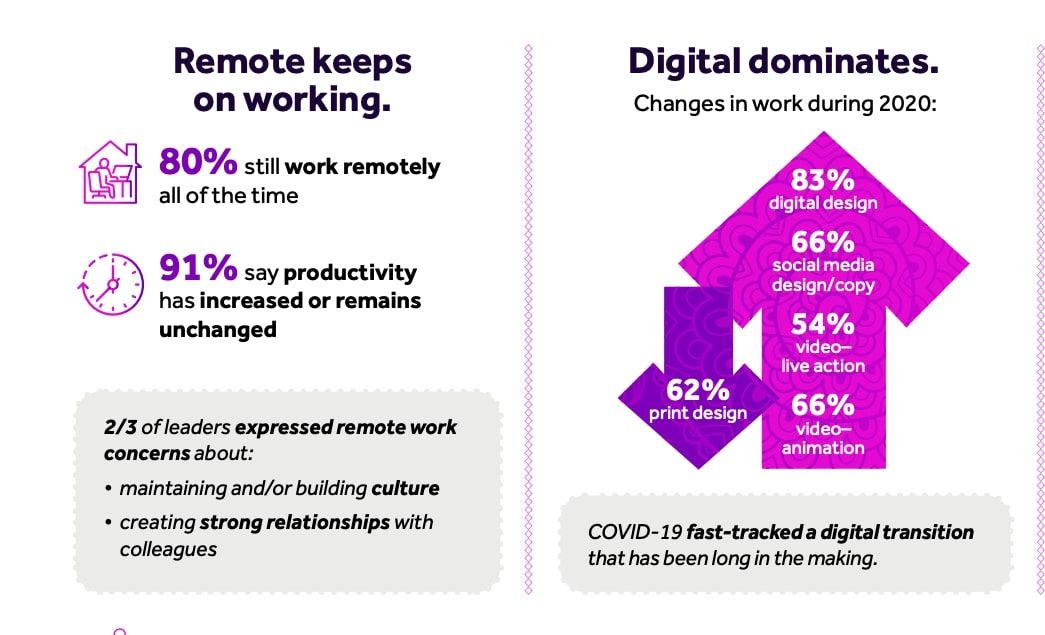
Remote collaboration keeps working and Digital dominates . Cella, Inc., 2021 In-House Creative Industry Report, April 2021

Not enough time for creativity and not enough resources. Cella, Inc., 2021 In-House Creative Industry Report, April 2021
65% in-house creatives say they're lacking time to actually work on real creative projects (creation), which is no surprise since they're handling both creation and digital brand implementation
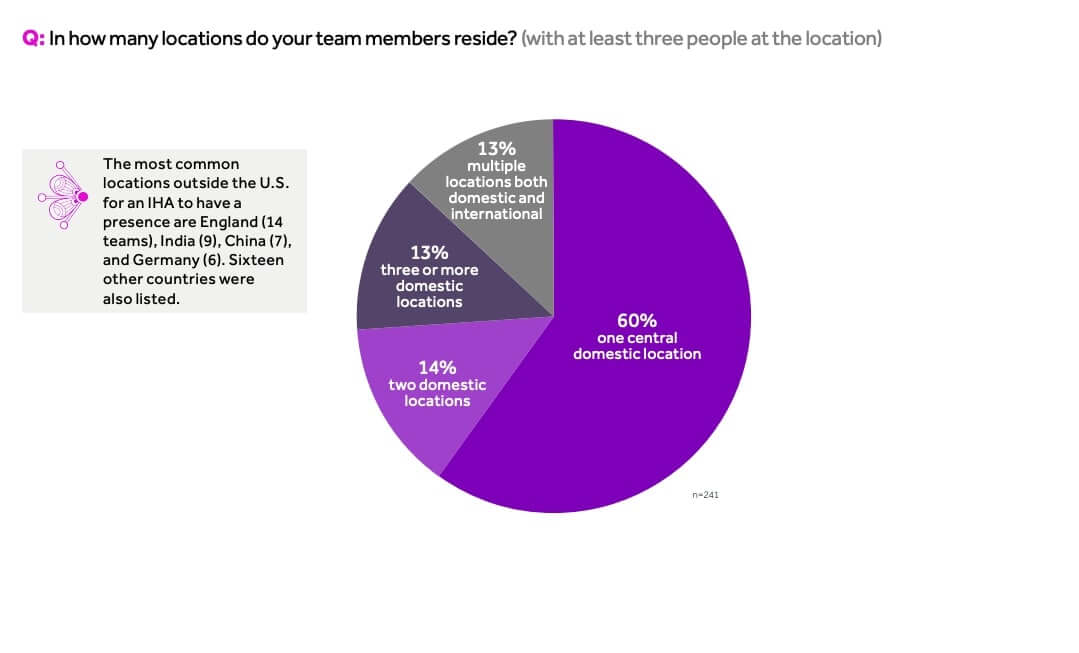
Single central national team location model prevails Cella, Inc., 2021 In-House Creative Industry Report
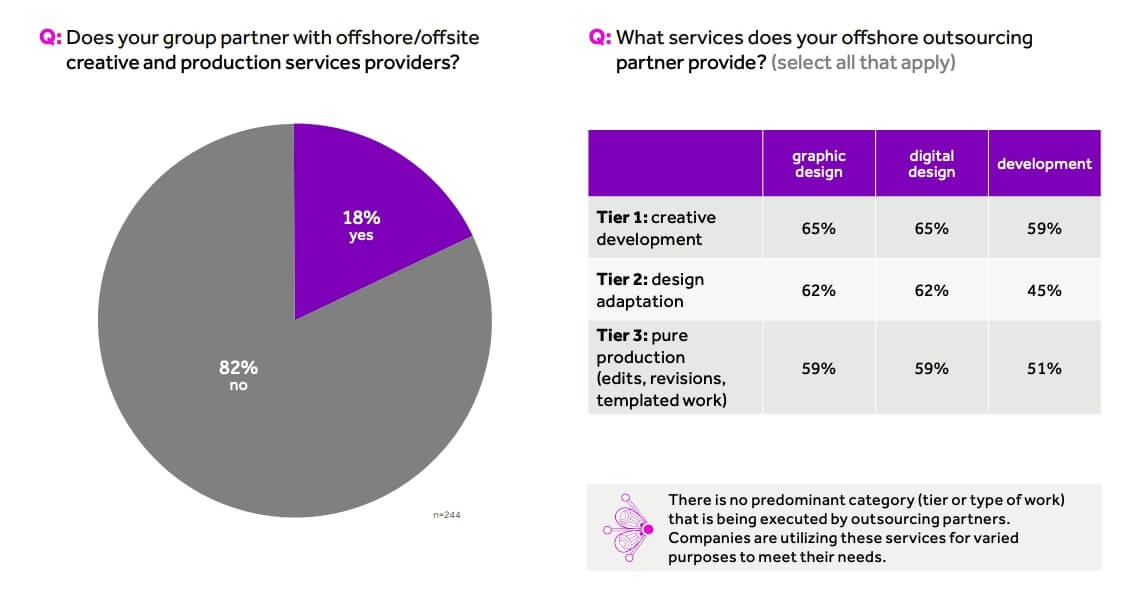
Large majority doesn't partner with offsite/offshore creative and production providers Cella, Inc., 2021 In-House Creative Industry Report
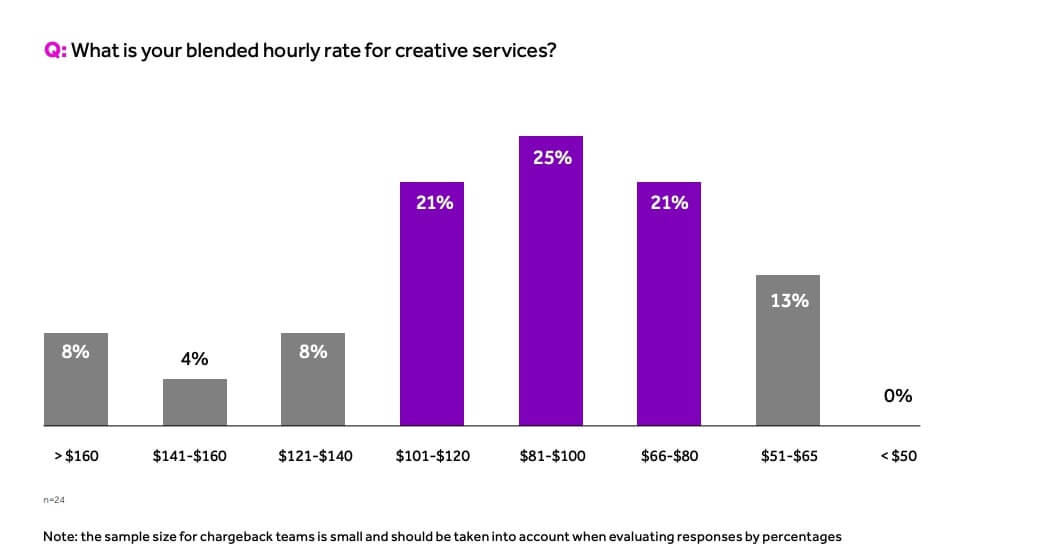
Hourly rate for in-house creative services : none under 50$. Cella, Inc., 2021 In-House Creative Industry Report
Demand for brand creative content outpaces the ability for in-house creative team hiring. This is confirmed both by the findings of Cella Consulting 2021 In-House Creative Industry Report and Bannerflow 2021 State of In-Housing Report. The latter, surveying over 200 senior marketers in Europe, charts the growth of in-house, but identifies, only minuscule FTE increase. Despite of exponential growth of demand, the staffing has only been incremental. Most in-house creative teams, averagely sized up to 10 people only grew 1% in their headcount. This finding points to the economic limit of in-house (FTE) team growth.
.jpg)
1-5 person headcount increase of in-house teams. The State of In-Housing, 2021, Bannerflow and Digiday.
The FTE hiring capacity limit is also evident by looking through Cella's report, which identifies tapping to freelance pool as a bridging the gap strategy in creative resourcing, as 88% of IHA leaders report on using this tactic to solve their immediate needs.
.jpg)
Majority leverages freelancers and contractors to temporary bridge the creative resourcing gap. Cella, Inc., 2021 In-House Creative Industry Report
Summarising the findings of the report would be to say that the in-house creative teams are expecting to grow, but they're acknowledging that creative resourcing will be (and already is) a major challenge. At the same time, in-house teams are still prevalently at one central national location, maybe two. They've discovered that remote working not only works as a temporary crisis measure but most probably will become a permanent way of working as technology as an enabler not only makes this possible but makes their work more productive and in some instances more creative. Fastest growing category of work is digital design, creative and video which, usually a more implementational type of work (of the original master creative), fits perfectly to outsource to a remote partner. However, despite the fact that their internal house rate is prevalently between 66-120 $, with majority being in the range of 80 -120 $, 84% of in-house creative teams don't work with offshore creative production partners which could deliver hourly rates well under $ 50.

Costs saving potential aside, 65% in-house creatives say they're lacking time to actually work on real creative projects (creation), which is no surprise since they're handling both creation and digital brand implementation (digital design, social design, video etc.). It takes no genius to acknowledge that this inability of in-house creatives to devote themselves to actually be creative, leveraging closeness to the operational business and intimate knowledge and devotion to the brand, completely hollows out the sole purpose of creating the in-house brand creative team in the first place. In-house leaders are bridging creative resourcing in the short-term through reliance on freelancers and flexible contractors, which per se are unsustainable long term strategies, on one side because of unstable nature of those relationships, and on the other on the limited FTE hiring capacity, which many of those flex workers might be hoping for.
Inability of in-house creatives to devote themselves to actually be creative, leveraging closeness to the operational business and intimate knowledge and devotion to the brand, completely hollows out the sole purpose of creating the in-house brand creative team in the first place.
For over a decade, creative leaders have used Cella's annual benchmarking report to help validate their strategies, shape their direction and manage in-house teams more effectively. Acknowledging the obvious surfacing opportunity to reduce costs, improve agility, and solve problems of creative resourcing and time for creative pursuits while meeting growing demand for digital based brand work through setting up and operating a remote (lower cost country) brand creative content factory team & digital (post)production hub should be a no brainer.
Setting up and operating an internal remote (lower cost country) brand creative content factory & digital (post)production hub - Uncovering The How
But, there must be a reason why in-house creative teams haven't leveraged the potential of remote / offshore teams and have opted for filling the creative resourcing gaps with freelancers and flex workers. Obviously, one of the reasons is the pre-pandemic bias for same central location work. Freelancers and contractors would usually work on-site or in the offices of in-house creative teams. Flex and freelance workers working in the office locations admittingly could be the next best thing to hiring FTE, as it's getting best of both worlds - having people working in your offices full time while avoiding paying wage taxes. In some countries government and tax institutions have been actually trying to crack down on this type of shadow employment which was quite prevalently used in corporates. However, with the remote work, as more and more creatives work from home, having people in the physical office as the argument will become less and less relevant.
As more and more creatives work from home, having people in the physical office as the argument will become less and less relevant.
Aside of the physical location bias, a lot of creatives especially in developed countries, have a country or cultural bias, believing that creativity of proper level can't be found beyond their borders. Indeed, creativity or perception and understanding of creativity (especially the creation part) embodied in understanding of aesthetics is strongly linked with cultural and societal elements. There are clear design and visual language preferences that are different for different regions, societies and countries. One can say that Nordic countries prefer minimalistic expressions, while Southerners like more intense communication tones. However, these gaps not only narrow in times of global brands, global collaboration and consumers, but are completely irrelevant by acknowledging that creative talent, like any other is evenly distributed across the world. What is not evenly distributed are technology and societal trends and personal development opportunities.

Creative talent, like any other is evenly distributed across the world. What is not evenly distributed are technology and societal trends and personal development opportunities.
There are however also objective reasons why in-house creative teams haven't relied more on the remote / offshore creative service providers. Even though 61% of those who have worked with them are satisfied, which is a good number, the share of those who are very satisfied (21%) could and should be better. Even though the the respondents sample is very small (n=43), its worth digging deeper into. Some of the biggest drawbacks communicated are : miscommunication, poor attention to detail, prep work required to share projects (delegation) and lack of brand knowledge.
.jpg)
.jpg)
Drawbacks of offsite partners work is strongly linked to the (co)operational model Cella, Inc., 2021 In-House Creative Industry Report
These shortcomings are actually intrinsically linked to the both the external nature of creative services providers, the (co)operational model on one side, but also not enough time invested into brand onboarding, delegation, feedback and training on the client side of the relationship. To be successful internationally located remote teams need to first acknowledge that there will distance not only in physical terms, but also in cultural and communication terms. Undefined expectations are mothers of all mistakes. That is why best way to work with a remote / offshore / offsite creative service providers is to have a standardised (implementation type) stream of work and very structured and digital enabled way of collaboration, communication, feedback. Thee business relationship should be defined through SLA (service level agreements) while making sure that there is also a KPI alignment between partners' and in-house team's evaluation by the internal clients. With abundance of technology there's really no reason why there shouldn't be clear and structured, digital enabled ways of briefing, production, delivery, feedback, evaluation and archiving of creative projects. Moreover, with proper strategic preparation, onboarding and delegation processes in place the handover of work should be seamless. Processes are key to successful collaboration in any, but especially across internationally located teams.
Processes are key to successful collaboration especially across international located teams.
Poor attention to detail and lack of brand knowledge may be more case based rather than systemic problems of offsite / remote / offshore creative services providers. However, one could argue that there's a finite amount of effort that is worth investing into an external vendor, to educate and on-board both on elements of certain skill levels and on brand. On the other side, from the vendors' perspective, as a lower-cost provider there might not be enough resources to hire & retain best talent, nor to do proper quality control before delivery to a (not fully committed) client. While there are many operational reasons why there might be gaps in the quality of delivery of service, key to overcoming this challenge lies in an alternative model and cooperation set-up.
Setting up and operating an internal remote (lower cost country) brand creative content factory & digital (post)production hub - Explained
Creating a remote (lower cost country) brand creative content factory teams & digital production hubs working as internal ecosystem partner solves both the operational shortcomings of the traditional in-house creative production model and operational pains in-house creative teams face when working with traditional offshore / offsite creative production service providers. This is especially true if it is set up and operated by an external vendor who takes on the initial risks and sunk costs of set up until creative remote team becomes entirely functional and ready to be integrated with the main in-house team.
Creating a remote (lower cost country) brand creative content factory teams & digital production hubs working as internal ecosystem partner solves both the operational shortcomings of the traditional in-house creative production model and operational pains in-house creative teams face when working with traditional offshore / offsite creative production service providers.

Strategic alignment from the start
The key differentiator lies in the strategic set up of the relationship. Namely, the remote (lower cost country) brand creative team starts of as an external team, but its purpose and goal is to become an international extension of the internal team. The fact that the purpose of the team is to become a a part of the internal ecosystem (owned, controlled and operated by the main in-house team / company) creates alignment of the strategic vision and success incentives from the very start. Namely, the success incentives for the external vendor will be tied to the successful operational and executional alignment and integration with the in-house creative team. Investing time into defining and designing best models an supporting processes for successful cooperation at every stage of the relationship now is incentivised for both sides.
Directed hiring
External incubation of a future internal remote (lower cost country) based creative team, creates additional benefits which aren't present in the alternative set ups. Most importantly the type of creative staff to be hired is defined based on the in-house creative teams future needs. These are to be identified from skills most in demand, to type of work easiest to outsource initially. Directed hiring of the remote creative team staff makes things easier to begin with, as the incoming quality of the staff can be controlled. In case there are education / up-skilling projects to be done with the remote location staff, the investment of time, effort and money, because of its charted internal ecosystem future, will have a same factor of return as with the original in-house team.
Internal culture alignment
Many of the operational misalignments between internal team and an external vendor - whether its a freelancer, flex worker, agency or an offshore creative production service providers rests on simple mismatch of general line of thought. Copy-pasting your team's culture on an external vendor who did his team hiring with purpose and business model of his company is impossible. Growing and nurturing team culture from the start is a much more natural path to internal culture alignment between internationally located teams. Culture is possible to grow and nurture, independent of the location. Same can be expected and done with the remote creative team.
Digital decoupling as a pathway to scope of work
Principle of digital decoupling is a sure path to success when it comes to setting up a remote creative content factory team. Essentially, when decoupling is utilised, companies unbundle creative and strategy development from asset creation in order to improve speed, quality and lower production costs when executing advertising campaigns. Production decoupling allows the in-house creative team to do what they do best: strategy, ideation and creation of master assets for global campaigns. Production work is assigned to the remote localisation and adaptation hub, including copy transcription, distributing assets over media channels in different markets, delivery to publishers, amongst others. Because today’s advertising campaigns tend to be global and multi-channel, there is an argument that “garden” and “factory” models should be implemented. Gardens grow ideas, whereas factories manufacture them. In this regard, garden agencies are costly because they are staffed with expensive talent who are expert problem solvers, work in expensive offices, often in expensive cities. On the other hand, the factory model is where companies can focus on cutting costs and achieving operational efficiencies.
Flexible location(s) and cost structure
Selecting a location of the remote creative content factory team is a function of consideration of multiple factors. One of key guiding principles, however, would be staff costs, available talent pool (size of the country, city, market) and general alignment between (inter)national cultures, habits and of course general language proficiencies. Even European Union is a very diverse market when it comes to staff costs. The difference between the European Union’s most costly labour and its cheapest might surprise you.
Location choice can also be a factor of cost targeting - finding a location which will fit your budget.
.jpg)
Image : Eurostat
At more than 38 euros, or $42, the spread is fairly wide, bookmarked at one end by Bulgaria, where workers cost 5.4 euros per hour, or around $6, and at the other by Denmark, at 43.5 euros, or nearly $49 dollars. Non-wage costs, including employers’ social contributions and employment taxes, also varied. The share of non-wage costs was 24% in the EU and ranged from 6% in Malta to 33% in France. So location choice can also be a factor of cost targeting - finding a location which will fit your budget. Some of the super interesting choices are also Balkan countries which some are in EU (Croatia) while some are on the brink of the EU (Bosnia & Herzegovina, Serbia).
Building a team of 10 and building a team of 100 however will require different considerations in terms of total available talent pool. Building a team of 10 you can probably find anywhere, but building a high quality team of 100 will most probably direct you to bigger countries and bigger cities to make sure that talent quality remains uncompromised as your team grows bigger.
Legal and operations
Finding and hiring a remote, foreign country based, team can seem complicated. Making sure its done properly in terms of right legal entity, respecting both local and international labour and tax laws usually is showstopper for most companies who have considered benefits of international creative teams. Even a trial or experimentation involves significant team and company investments of time, money and effort and even potential exposures to legal risks of venturing into unknowns (internationalisation). That is why the best model is the case where an external vendor takes up risks and investments in finding, hiring and managing a team in a foreign country until the team proves to be completely fit for integration - both in terms of creative production and quality of work and right legal framework. "Lease to buy" model enables trialing of creative production without initial significant money and legal risks and gives companies time to arrange a best framework to acquire (internalise) the externally incubated team. This can be done either by buying a company that has been set up (once the team is successfully operating for couple of years) or by client opening a representative office which would then absorb these local employees.
How can we help?
In case you're looking for ways to reduce costs of creative content production and are open to leveraging capability multiplier potential of remote creative teams and digital decoupling we'd love to talk to you and see whether some of our experience in rationalising global-to-local brand & creative content operations for clients like Nike EMEA and Uber EMEA. Reconfiguring how global-to-local brand marketing is done through implementation of process driven technology workflow solutions and geographical optimization of digital brand marketing production, we were able to save clients like Nike EMEA and Uber EMEA millions of euros in marketing costs.
SO DIGITAL focuses on cost & operational rationalisation of global brand's go-to-market operations. We've worked with some of the leading global brands such as Nike EMEA (14 WE markets) and Uber EMEA (47 EMEA markets)
Nike EMEA stakeholder was wholesale. com brand digital team and our role involved digital enablement of tiered brand marketing & campaign content support strategy towards a complex network of e-retail partners across 14 WE countries and implementation rationalisation of seasonal brand (launch) activations for 10 categories. Uber EMEA case stakeholder was in-house brand creative / marketing agency and our role was streamlining go-to-market operations when it comes to marketing & creative content support of 47 EMEA countries based ( x time city teams) growth marketeers.
For both of these flagship clients scope involved :
1) creation of tailored made platform solution which rationalised and digitised digital brand management, activations & campaign content operations between HQs and country teams (local units/ 3rd party retail partners) & solved many operational issues present.
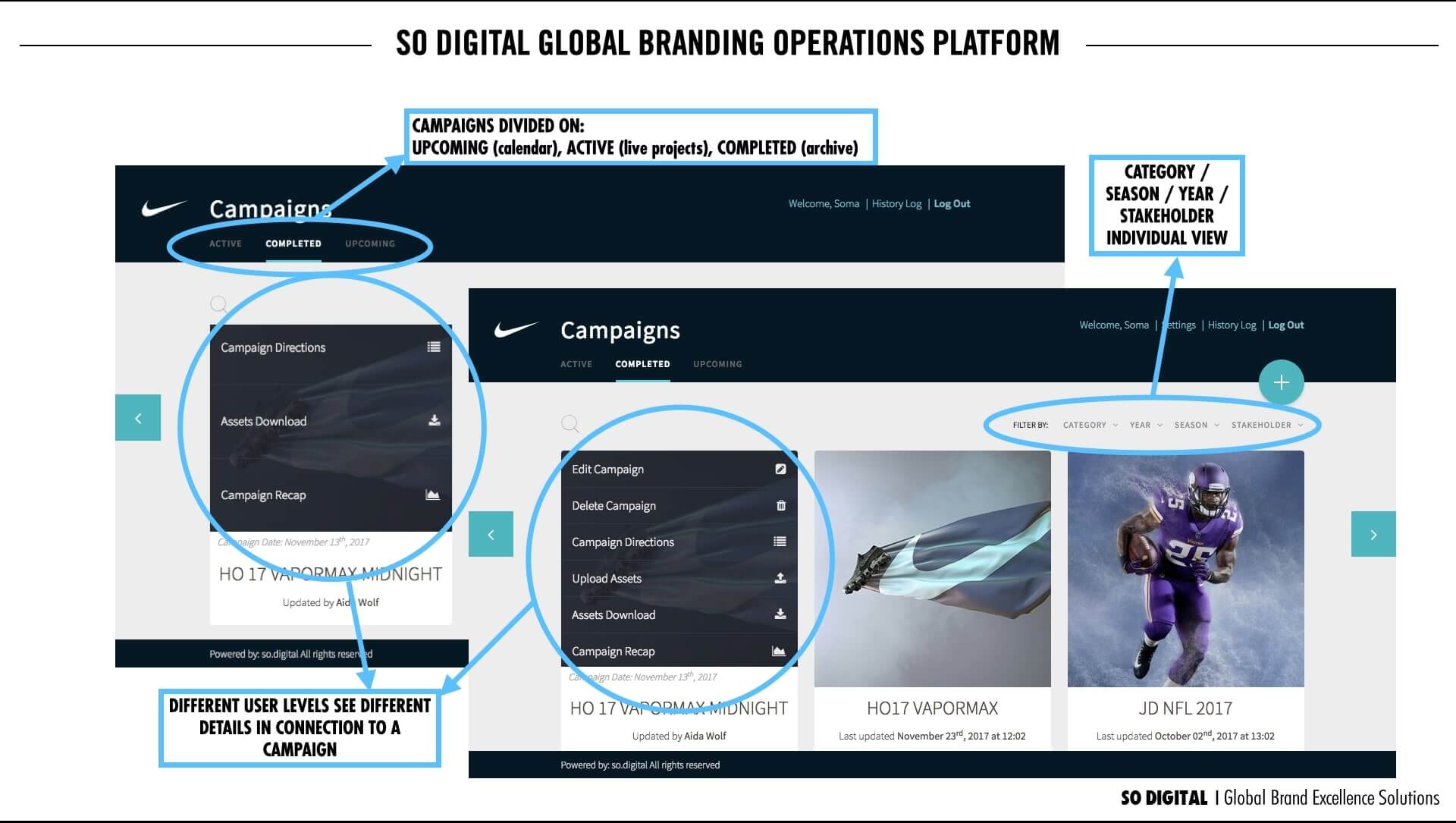
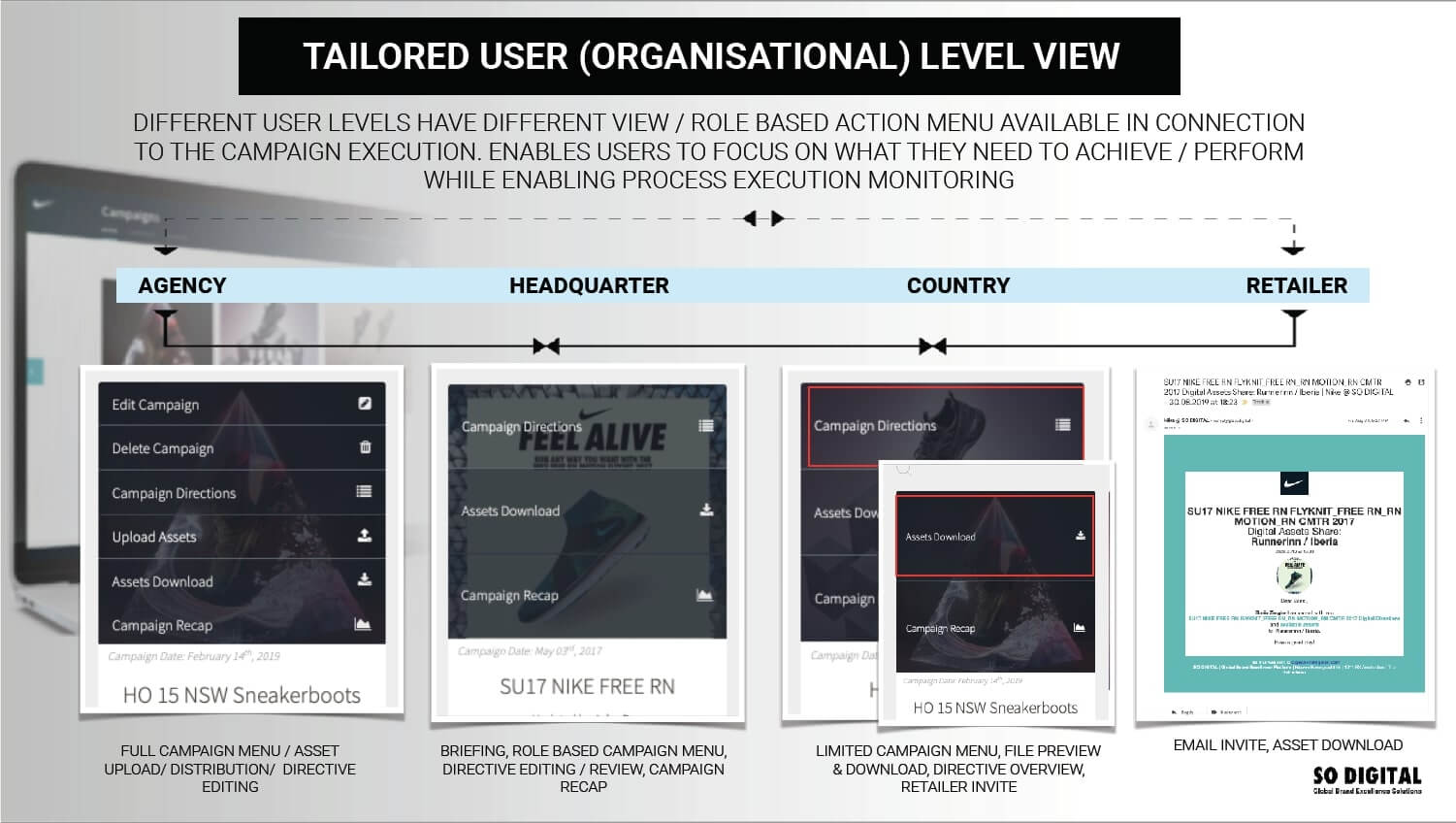
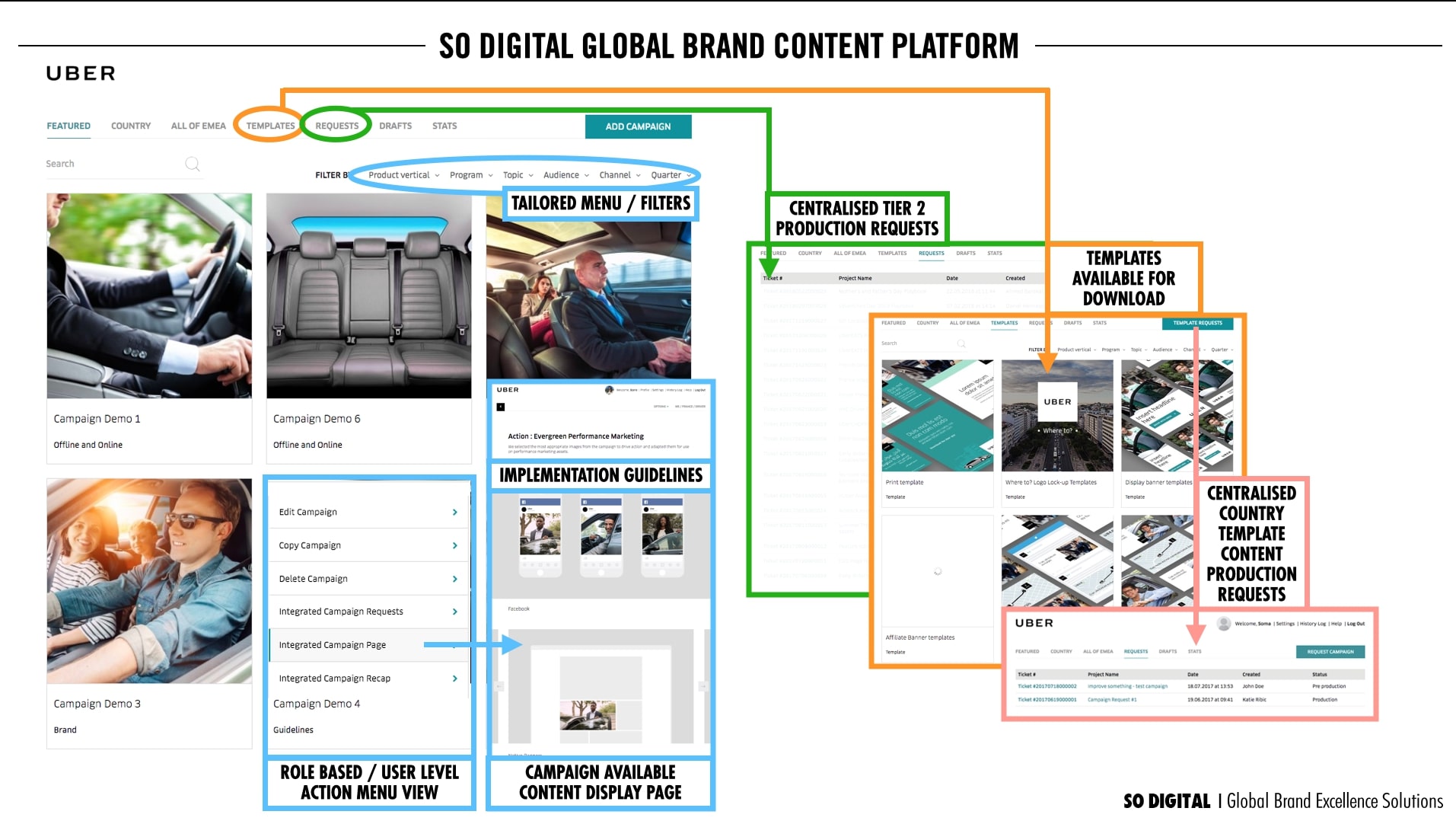
2) creation of a remote digital brand content factory placed at a lower cost countries, which produced large volumes of premium digital brand marketing campaign content, e-commerce content, while providing support for tiered 2, tier 3 requests and web / application development support. We've set up & operated 3 production hubs in Balkans region (Croatia, Bosnia & Herzegovina, Serbia) while providing face2face client service in Amsterdam and supporting talent (unavailable in Balkans region) form other cities such as Berlin and Barcelona.
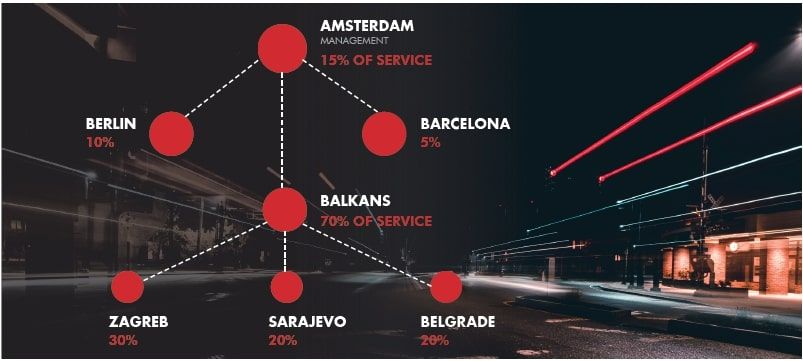
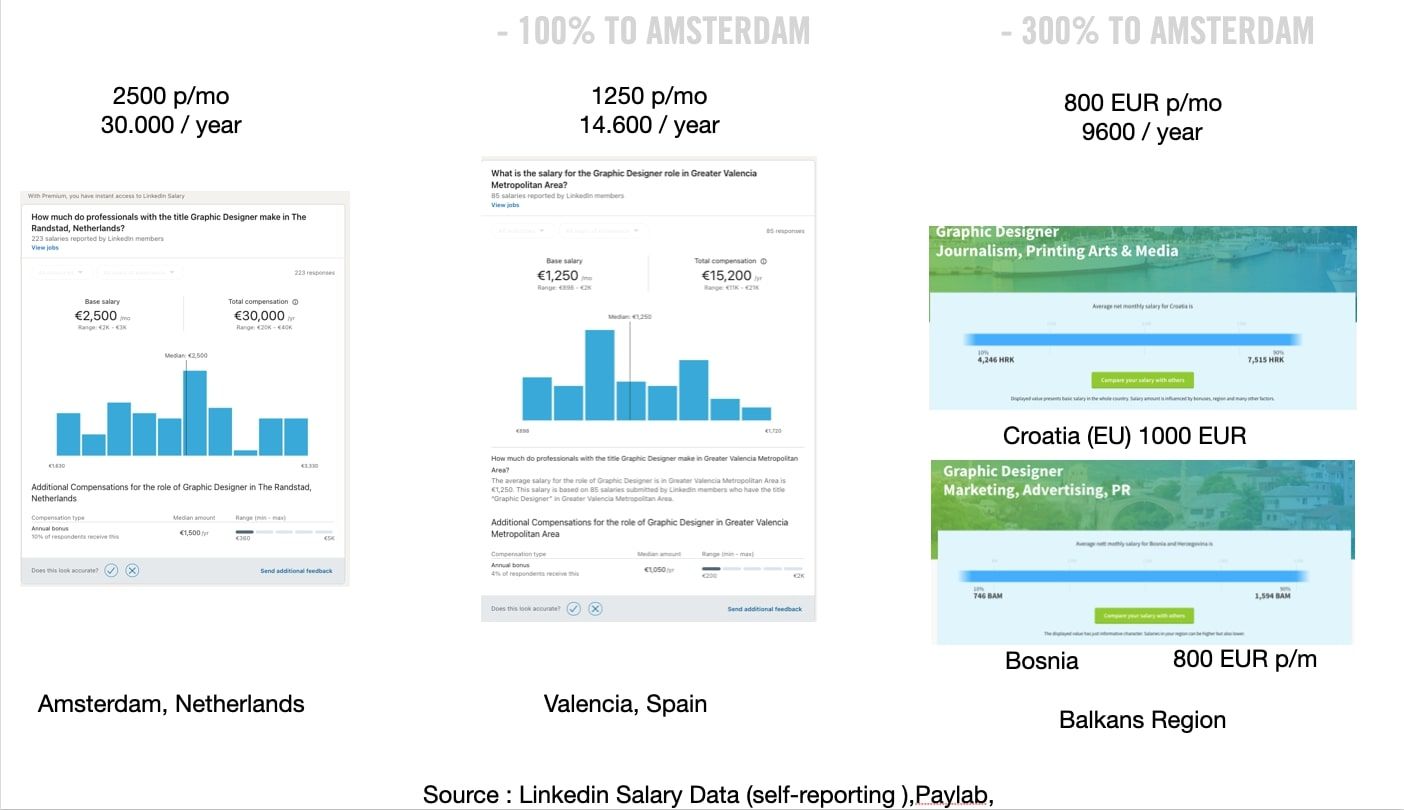
Geographical cost optimisation potential for position of a "Graphic Designer" is between 100 - 300% in 2021 between Amsterdam, Valencia and Balkan countries.
So rationalisation was done both through process & resource side of content operations.
- CLIENT CASE ACCESS
References :
Imogen Watson, "57% of multinationals now in-house creative, as Covid-19 deepens trend", The Drum, https://www.thedrum.com/news/2020/09/04/57-multinationals-now-house-creative-covid-19-deepens-trend
Ryan Barwick. "Why Hotel Brands Are Joining the In-Housing Trend in 2021" , AdWeek.com, https://www.adweek.com/media/why-hotels-in-housing-agencies-trend-2021/
Christine Downton, "When in-housing goes wrong", CampaignMagazine.co.uk https://www.campaignlive.co.uk/article/when-in-housing-goes-wrong/1581758
Darren Woolley, "The often-hidden costs of in-house agencies", CampaignAsia.com https://www.campaignasia.com/article/the-often-hidden-costs-of-in-house-agencies/468064
Adit Abhyankar, "The Challenges Brands Building In-House Agencies Face And How They Can Attain Relevant Marketing" https://www.forbes.com/sites/forbestechcouncil/2020/12/03/the-challenges-brands-building-in-house-agencies-face-and-how-they-can-attain-relevant-marketing/
Cella, Inc., 2021 In-House Creative Industry Report, April 2021, https://www.cellainc.com/insights/in-house-industry-report/
Bannerflow, The State of In-Housing, 2021, https://info.bannerflow.com/the-state-of-in-housing-2021-report
"Digital Decoupling A Capability Multiplier in the Marketing Equation", Accenture, https://www.bl.uk/business-and-management/collection-items/suppressed-by-publisher/accenture/digital-decoupling-a-capability-multiplier-in-the-marketing-equation
Decoupling Global Digital Marketing Services, Lionbridge https://info.lionbridge.com/Decoupling-Global-Digital-Marketing-Gated-EN-GB.html?utm_source=linkedin-shared&utm_medium=social&utm_campaign=Lionbridge-Decoupling-Digital-Marketing-ebook-uk&utm_content=marketing-track-uk
Emma Charlton, "Where labour costs the most (and least) in the European Union", World Economic Forum, https://www.weforum.org/agenda/2019/05/chart-labour-costs-in-european-union/


